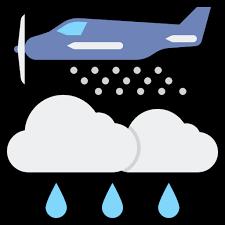Punjab govt mulling artificial rain in fresh bid to tackle smog in Lahore.
The caretaker administration in Punjab is exploring the possibility of inducing artificial rain in Lahore and other regions affected by smog, according to an official statement.

Caretaker Chief Minister Mohsin Naqvi mentioned that consultations have been held with the Space & Upper Atmosphere Research Commission and relevant universities. The chief secretary of Punjab will lead a delegation to Dubai for discussions on implementing artificial rain in Lahore and other affected areas if deemed necessary.
In a media briefing on Wednesday in Lahore, CM Naqvi stated that a meeting with officials from Bahauddin Zakariya University and Punjab University is scheduled for tomorrow. He emphasized the government’s commitment to act upon the recommendations provided by these institutions.
While acknowledging the complexity of the process, CM Naqvi affirmed the immediate initiation of efforts. The government has also decided to install 12 ionizer filters in Lahore promptly to address air quality concerns, with approval anticipated in the upcoming cabinet meeting.
Furthermore, the caretaker government has sought assistance from a team of Chinese experts to visit Pakistan and contribute to improving the air quality in the province.
The unique aspect of the anti-smog strategy involves reaching out to academic institutions for expertise in artificial rain.
Cloud seeding, commonly known as artificial rain, is a weather modification technique designed to stimulate precipitation. The process involves introducing various substances into clouds to encourage the formation of raindrops or snowflakes.
Typically used to increase rainfall in drought-affected areas, suppress hail storms, and disperse fog, cloud seeding employs small particles of silver iodide, a crystalline structure similar to ice, added to clouds either from aircraft or ground-based methods.
In cloud seeding, water vapor within clouds is coaxed into forming droplets around silver iodide particles. Jose Miguel Vinas, a meteorologist with Meteored, explained that this method tricks the water vapor to enhance precipitation. Artificial rain, besides its impact on weather patterns, also offers benefits for air quality improvement.
Here’s how artificial rain works to enhance air quality:
1. Washes away air pollutants:
Artificial rain can effectively wash away suspended pollutants in the air, including particulate matter (PM), nitrogen oxides (NOx), and sulfur dioxide (SO2). These pollutants pose health risks, contributing to respiratory infections, heart disease, and cancer.
2. Increases humidity:
The process of artificial rain can raise humidity levels in the air. Higher humidity helps trap pollutants, preventing their dispersion and contributing to a reduction in air pollution.
3. Reduces dust and particulates:
Artificial rain plays a role in diminishing the presence of dust and other particulates in the air. These particles can irritate the eyes, nose, and throat, and exacerbate respiratory conditions such as asthma.
